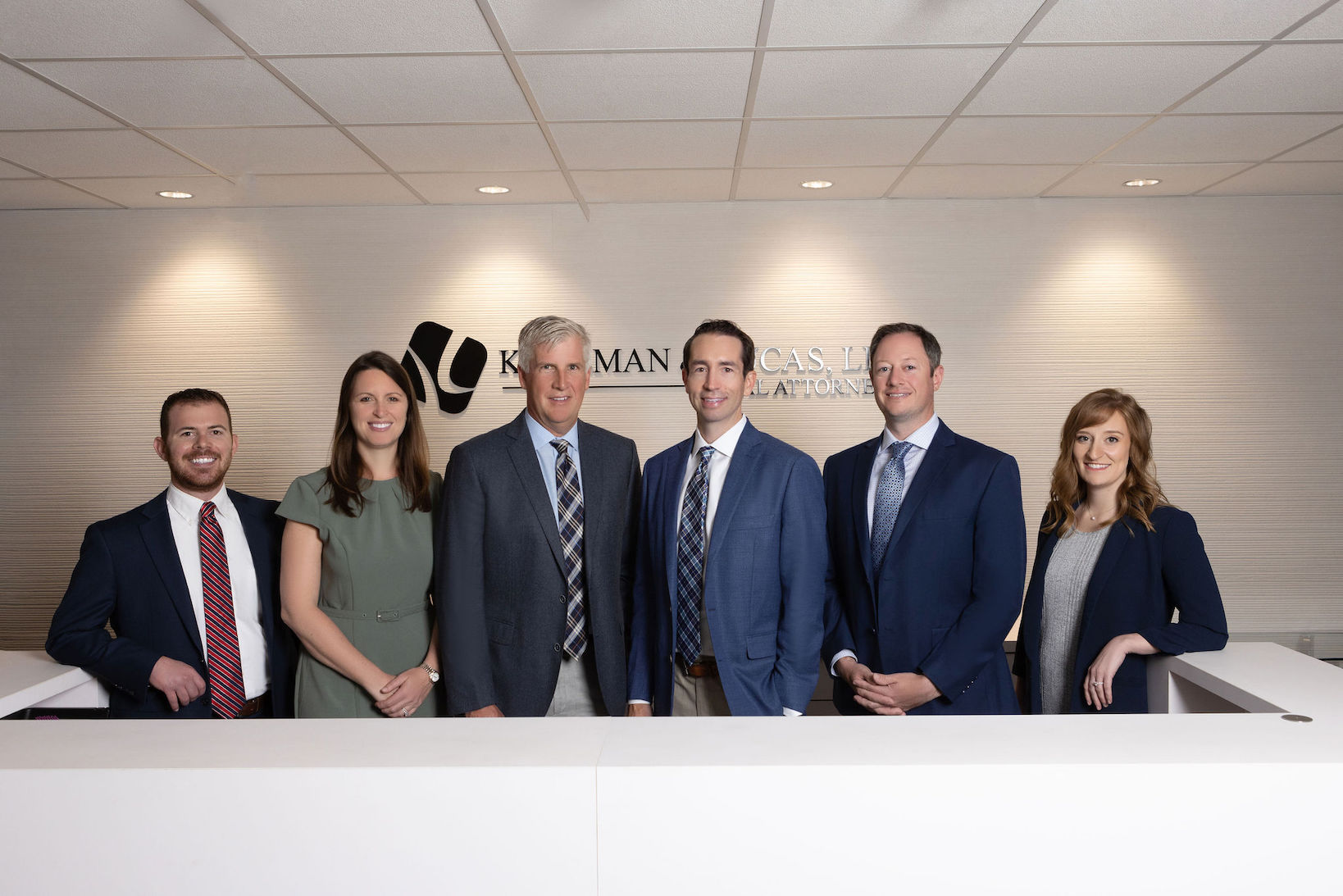
We’re the attorneys the car
manufacturers don’t want you to hire.
Auto Defect Lawyer in Kansas City
Auto Defects
For decades there has been a large gap between what is and what should be the safety standards for our cars.
As a result of car manufacturers choosing not to incorporate readily available safety features into their vehicles to save money, thousands have been needlessly injured or killed in what should have been uneventful, survivable collisions. At Kuhlman & Lucas, LLC, we have extensive experience in handling auto defect cases and have collected millions from these manufacturers on behalf of our clients.
11000000
Auto Defect
9750000
Auto Defect
6500000
Auto Defect
5250000
Auto Defect
Types of Car Defect Cases
There are two types of car defect cases: when a car defect causes the crash which results in serious injury or death and when a vehicle fails to provide reasonable crash protection to its occupants.
Examples of when an car defect causes the crash include a tread separation of a defective tire which results in the driver losing control of the vehicle or a defective GM ignition switch which results in total loss of vehicle control. Examples of when a vehicle fails to provide reasonable crash protection to its occupants include failing to equip a vehicle with side curtain or rollover airbags in a vehicle, a punctured fuel tank that results in a vehicle fire or a broken seat that fails to keep the occupant in the right position during a crash.

Types of Auto Defect Cases
If a vehicle occupant is injured or killed in a side impact or t-bone type crash, there may be a claim against the car manufacturer for its failure to install side airbags. Side curtain airbags and side torso airbags were designed by car manufacturers to protect the body and, most importantly, the head and neck in side impact crashes. Car manufacturers have known of the benefits of side airbags for decades Unfortunately, for many years car manufacturers chose not to put side airbags on their vehicles as standard equipment in order to cut material costs, save money and increase their profit, all at the expense of safety. Any vehicle model year 2000 or later in a side impact or t-bone type crash should be screened for a lack of side airbag claim against the car manufacturer.
If a vehicle rolled over on or off road and a vehicle occupant was partially or fully ejected during the rollover, there may be a claim against the manufacturer for its failure to install rollover activated side curtain airbags. Rollover activated side curtain airbags are side airbags that cover the vehicle’s side windows in a rollover. They are deployed by a sensor that detects when the vehicle is starting to roll. Rollover activated side curtain airbags are designed to prevent occupant ejection in rollover crashes. Like side impact airbags, car manufacturers chose not to put rollover activated side curtain airbags on their vehicles as standard equipment in order to cut material costs, save money and increase their profit, all at the expense of safety. Any vehicle model year 2002 or later involved in a rollover should be screened for a lack of rollover activated curtain airbag claim against the car manufacturer.
If a vehicle occupant was injured or killed in a rollover which began on the road, there may be a claim against the car manufacturer for its failure to install electronic stability control (ESC). ESC helps drivers maintain control of their vehicle during extreme steering maneuvers by keeping the vehicle heading in the driver’s intended direction when the vehicle nears or exceeds the limits of road traction. ESC detects the loss of traction and uses automatic braking of individual wheels to prevent the vehicle from spinning or skidding out. According to NHTSA and the IIHS, one third of fatal accidents could be prevented by ESC. Any rollover or loss of control involving a model year 2003 vehicle or later should be screened for a lack of ESC claim against the car manufacturer.
If a vehicle occupant was injured or killed by another vehicle that crossed the center line, there may be a claim against the manufacturer of the vehicle that crossed the center line for its failure to install lane departure warning or lane keep assist. Lane departure warning is designed to alert the driver when it senses the vehicle drifting out of its intended lane of travel. Lane departure warning typically alerts the driver by an audible or visual warning, vibration of the steering wheel or some combination of the two. Lane keep assist takes this a step further by actually making gentle steering inputs to keep the car within its intended lane of travel. Both systems work through a forward-facing camera that detects lane lines and is often mounted behind the rearview mirror. Any crash which was caused by a model year 2008 vehicle or later inadvertently crossing a center should be screened for a lack of lane departure warning and/or lane keep assist claim against the car manufacturer.
If a vehicle occupant is injured or killed in a rear impact collision, there may be a claim against the manufacturer of the striking vehicle for failure to install an automatic emergency brake (AEB) or forward collision warning (FCW). Forward collision warning systems detect slowing or stopped vehicles ahead and warn the driver to take action by a vibration of the steering wheel or audible or visual warning. Automatic emergency braking systems detect an impending forward crash with another vehicle and automatically brake the vehicle to avoid or mitigate the collision. Any vehicle model year 2008 or later that collides with the rear of another vehicle and causes serious injury should be screened for a lack of automatic emergency brake or lack of forward collision warning claim.
Airbags were developed to reduce injuries in motor vehicle collisions, particularly those that occur at higher speeds. While properly designed and performing airbags do a tremendous job at keeping people safe and preventing injury, poorly designed or manufactured airbag systems have resulted in countless serious injuries and deaths. A defective airbag may deploy at the wrong time (too quickly or slowly), explode, send shrapnel at vehicle occupants or fail to deploy at all. Airbag defects can be devastating, often resulting in traumatic brain injury, brain stem injury, brain hemorrhage or swelling, broken vertebrae, paralysis, blindness or death. Many times airbags that should deploy fail to deploy at all, leaving vehicle occupants completely unprotected in the event of a crash. Common airbag defect case types include:
- Non-deployment or failure to deploy. Airbags that don’t deploy in crashes when they should are defective. This can be the result of one or more issues, including bad airbag sensors, not enough airbag sensors, poorly located airbag sensors, failing to protect the power supply to the airbag system in a crash, setting the airbag deployment threshold too high or the system failing to detect that the seat is occupied.
- Takata airbag or shrapnel. Airbags that explode upon deployment and send pieces of metal at the vehicle occupants are defective. Many people have been seriously injured and killed as a result of metal shrapnel from deploying Takata airbags.
- Lack of a tether or aggressive airbags. An airbag that inflicts injury on a vehicle occupant when it deploys is defective and defeats the purpose of having an airbag in the first place. Airbag inflicted injuries can be the result of failing to include a tether in the airbag, an improper bag fold or an improperly sized airbag.
- Late deployment. Airbags that deploy too late can also inflict injury on a vehicle occupant and are defective. This is the typically the result of a bad sensor, poor sensor location, not enough airbag sensors or improper calibration of the airbag system.
If you believe you have an airbag defect case, contact Kuhlman & Lucas, LLC today for a free case evaluation.
Seat belts have saved millions from death or injury over the years. Properly designed and manufactured seat belts play a pivotal role in reducing injuries and deaths in motor vehicle accidents, but defective seat belts provide a false sense of security and can permit or cause devastating injuries. Defectively designed or manufactured seat belts can fail to properly restrain an automobile’s occupants in the event of a crash or collision, often resulting in serious injuries such as traumatic brain injury, paralysis or deaths. Common seat belt defect case types include:
- Rear seat lap belt only seat belts. Older vehicles may have seat belts that lap belt with no shoulder strap. Lap belt only seat belts are extremely dangerous in to occupants in frontal collision as they cause the occupant will jackknife around the seat belt and often result in severe internal injuries or paralysis.
- Torsion bars or load limiters. These devices are designed to allow the seat belt to slowly payout to help the occupant ride down the crash. However, when poorly designed, these devices allow excessive slack to enter the seat belt system which can result in serious injury or death to the occupant.
- Rip stitching or energy management loops. This is when the seat belt is sewn onto itself to allow the seat belt to slowly payout to help the occupant ride down the crash. However, like torsion bars and load limiters, when poorly designed these devices allow excessive slack to enter the seat belt system which can result in serious injury or death to the occupant.
- Passive or automatic seat belts. Older vehicles may have seat belts with a shoulder strap that automatically moves into place when the door closes. This can result in a false sense of security and cause the vehicle occupant to forget to buckle the lap belt. Catastrophic injury can result when the shoulder strap is in place but the lap belt is not, including internal decapitation and paralysis.
- Defective seat belt buckles. Poorly designed seat belt buckles may permit inadvertent unlatching (coming unlatched by someone or something hitting it during a crash), inertial unlatching (coming unlatched by forces acting on the buckle in a crash or rollover) or false latching (when the buckle feels and looks like its buckled to the occupant, but it actually is not).
If you believe you have a seat belt defect case, contact Kuhlman & Lucas, LLC today for a free case evaluation.
While most people may not think about it, vehicle seats play an important role in protecting and restraining vehicle occupants in the event of a crash. Defective seats that do not properly protect and restrain the occupant in a crash can cause severe injuries, including brain injury, paralysis or death. Common seat defect case types include:
- Seat back collapse or failure. Seats need to remain as upright as possible in order to properly restrain the occupant in a crash. Defective seats or seat components can bend or break in a rear impact, causing even a properly seat belted occupant to be ejected from the seat. Once the occupant is no longer properly seated, all kinds of injuries can occur, including paralysis, quadriplegia, severe brain injury or death.
- Lack of headrest or headrest defects. Seats without headrests are defective and can result in severe head or neck injuries to vehicle occupants in rear impact crashes. Headrests that come out of the top of the seat during crashes are also defective and can cause severe injury or death.
- Reclining seats. Some vehicles may have seats that recline too far back. When an occupant is wearing the seat belt with the seat reclined too far back in a frontal crash, the occupant can be thrown forward into the seat belt, resulting in severe neck or head injuries.
Unfortunately, seat defects can also result in severe injuries to infants or young children sitting behind the collapsing seat. If you or a loved one has been seriously injured or killed as a result of a car seat defect, contact Kuhlman & Lucas, LLC today for a free case evaluation.
Car seats protect our most precious cargo. When defectively designed, manufactured or marketed, car seats fail to protect the children they were created to protect. Common car seat defect case types are lack of adequate side impact protection, cheaply made car seat parts and marketing forward facing car seats for children under the age of two.
According to figures published by the National Highway Transportation Safety Association (NHTSA), there are more than 8000 crashes per year involving serious injury or death resulting from tire failures. Tire defects can and do lead to crashes and rollovers that affect not only the occupants of the vehicle with the defective tire, but also other drivers on the road. Tire defects cause premature tire failure, including tire tread separation or tire blowouts. Tires also degrade over time, making older tires a serious safety hazard to everyone on the road. Tire manufacturing companies can and should be held accountable for their defective tires. If you believe you have a tire defect case, contact Kuhlman & Lucas, LLC today for a free case evaluation.
Most automotive engineers agree that if a vehicle occupant can survive the crash forces without serious injury, the occupant should not be injured or killed in a vehicle fire. Unfortunately, there are still many vehicles on the road today with fuel systems that are susceptible to post-collision fuel fed vehicle fires. Some of the more common defects which result in vehicle fires and burn injuries to occupants include a lack of or inadequate fuel tank shielding, improper gas tank placement behind the rear axle, side saddle fuel tanks, unprotected fuel lines or filler neck defects. If you or someone you know has been injured or killed in a vehicle fire, contact Kuhlman & Lucas, LLC today for a free case evaluation.
Rollover accidents have become much more common with the proliferation of sport utility vehicles. Unfortunately, many of these vehicles are top heavy, unstable and susceptible to roll over, particularly when a driver is forced to take evasive action. Rollovers often result in occupant ejection or roof crush which may cause severe injury or death to vehicle occupants. Along with strengthening vehicle roofs and structure, many of these injuries and deaths could have been prevented by electronic stability control, also known as ESC. Unfortunately, many car manufacturers have been slow to strengthen roofs or structures or incorporate electronic stability control because of cost. If you or a loved one have been injured in a rollover or a vehicle with significant roof crush, contact Kuhlman & Lucas, LLC today for a free case evaluation.
Many innocent people have been injured and killed as result of the ignition switch defects in GM or General Motors vehicles. The design of the ignition switch in many GM vehicles is dangerous and defective in that the ignition switch does not require much force to turn the key from the on position to the accessory or off position. This results in the key moving to the off position by inadvertent contact by the driver, an inadvertent pull of a long key chain attached to a key in the ignition or when a vehicle leaves the road. When the key in the ignition switch moves from the on to the accessory or off position, the driver loses power steering and the ability to control the vehicle and the airbags are effectively turned off. General Motors knew of this ignition switch defect internally and did not nothing for years before lawyers for those who had been injured and killed by the ignition switch defect brought it to light.
Free Consultation
Take your first step toward recovering financial compensation now by contacting us for a free consultation. An attorney on our team is ready to talk with you about your potential case to see if we can help.

Do I have a case?
Give us a few details about your concerns and our case tool will help you get the answers you need.